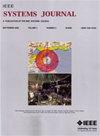$\mu$-Trust: Trustworthy and Transparent Service Composition for Microservice-Based IoT Systems
IF 4.4
3区 计算机科学
Q1 COMPUTER SCIENCE, INFORMATION SYSTEMS
引用次数: 0
Abstract
The distributed Internet of Things (IoT) systems facilitate real-time services through the composition of loosely coupled microservices. The composed IoT service is the output of multiple microservices, executed at computationally capable edge or fog nodes, which we consider as the facility nodes (FNs). However, the service composition process in IoT microservice architectures is abstracted from the users that gives freedom to the FNs to act maliciously and provide low-quality IoT services. Further, the service composition needs to be transparent so that the FNs involved in a service cannot repudiate their involvement at a later time. In this article, we propose a novel, lightweight, trustworthy, and verifiable service composition framework for IoT-based systems that adopt microservice architecture. First, we propose a dynamic programming approach to select trustworthy FNs for each user request, while considering the trust scores of the FNs and the delay requirements of the users. Next, we propose a transparent service composition framework that uses lightweight cryptography functions to generate the proof-of-involvement for the FNs in each service. With the help of a trust controller, we verify the proofs generated by the FNs and update the trust scores of the FNs. Considering the user traces from Berlin city in the simulation of urban mobility tool, we show the efficacy of the proposed framework in maximizing user trust and detecting malicious FNs involved in user services. Further, we show that the delay and communication overhead of the proposed framework are very low compared to the state-of-the-art methods.$\mu$-Trust:基于微服务的物联网系统的可信和透明的服务组合
分布式物联网(IoT)系统通过松散耦合的微服务组合来促进实时服务。组合物联网服务是多个微服务的输出,在具有计算能力的边缘或雾节点上执行,我们将其视为设施节点(FNs)。然而,物联网微服务架构中的服务组合过程是从用户中抽象出来的,这给了FNs恶意行为和提供低质量物联网服务的自由。此外,服务组合需要是透明的,以便服务中涉及的fn不能在以后拒绝它们的参与。在本文中,我们为采用微服务架构的基于物联网的系统提出了一种新颖的、轻量级的、可信赖的、可验证的服务组合框架。首先,我们提出了一种动态规划方法,在考虑FNs信任分数和用户延迟需求的情况下,为每个用户请求选择可信赖的FNs。接下来,我们提出了一个透明的服务组合框架,该框架使用轻量级加密功能为每个服务中的fn生成参与证明。在信任控制器的帮助下,我们验证了由FNs生成的证明,并更新了FNs的信任分数。在城市移动工具的模拟中,考虑到来自柏林市的用户痕迹,我们证明了所提出的框架在最大化用户信任和检测用户服务中涉及的恶意FNs方面的有效性。此外,我们表明,与最先进的方法相比,所提出的框架的延迟和通信开销非常低。
本文章由计算机程序翻译,如有差异,请以英文原文为准。
求助全文
约1分钟内获得全文
求助全文
来源期刊

IEEE Systems Journal
工程技术-电信学
CiteScore
9.80
自引率
6.80%
发文量
572
审稿时长
4.9 months
期刊介绍:
This publication provides a systems-level, focused forum for application-oriented manuscripts that address complex systems and system-of-systems of national and global significance. It intends to encourage and facilitate cooperation and interaction among IEEE Societies with systems-level and systems engineering interest, and to attract non-IEEE contributors and readers from around the globe. Our IEEE Systems Council job is to address issues in new ways that are not solvable in the domains of the existing IEEE or other societies or global organizations. These problems do not fit within traditional hierarchical boundaries. For example, disaster response such as that triggered by Hurricane Katrina, tsunamis, or current volcanic eruptions is not solvable by pure engineering solutions. We need to think about changing and enlarging the paradigm to include systems issues.
 求助内容:
求助内容: 应助结果提醒方式:
应助结果提醒方式:


